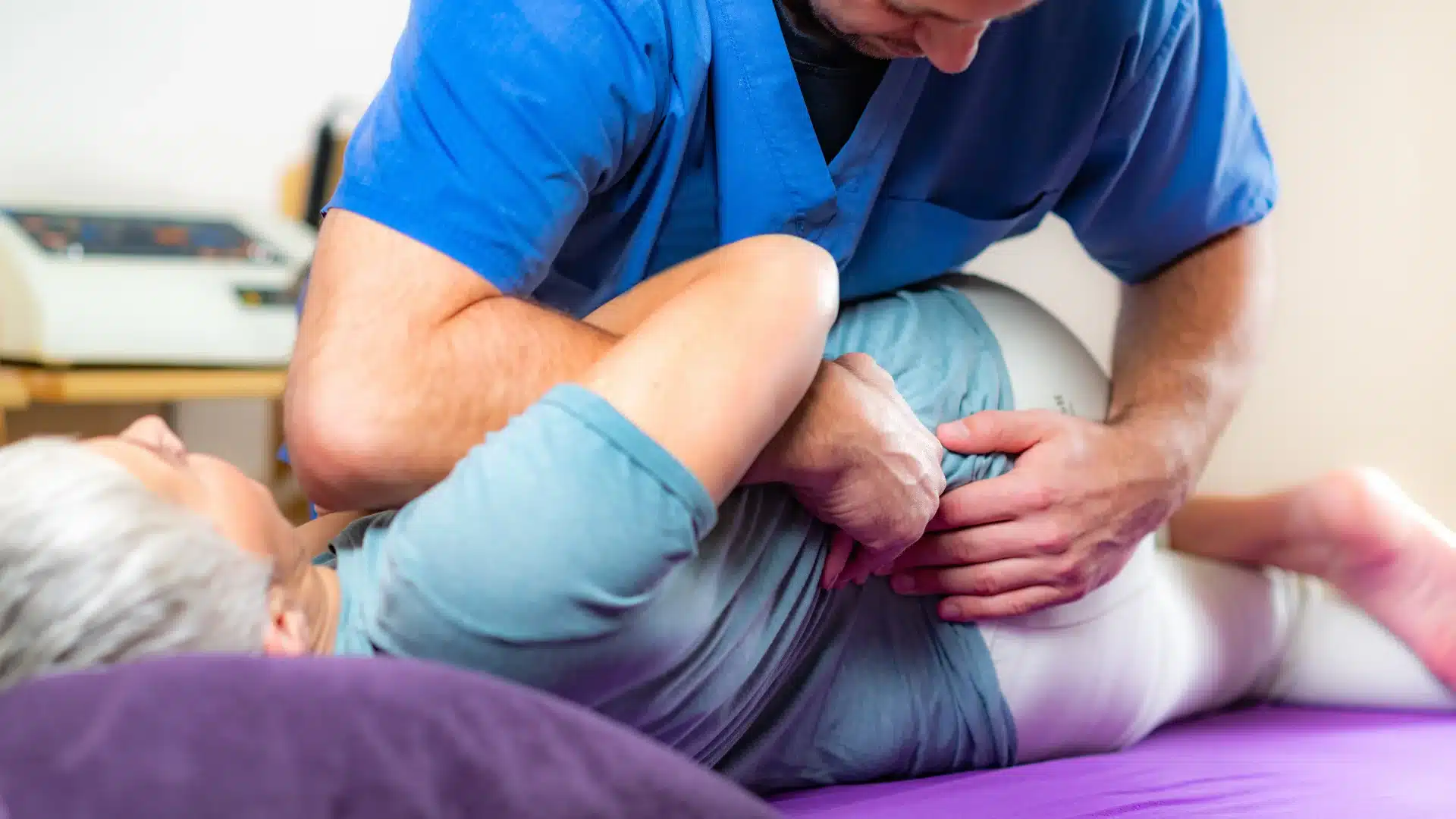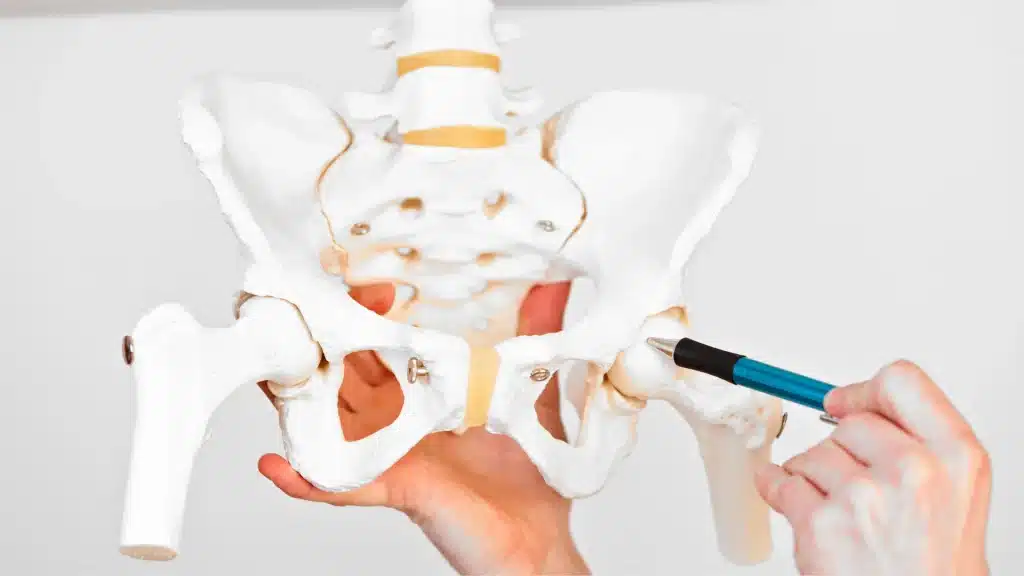Hip Labral Tear: Symptoms, Causes & Treatment

Overview
Did you feel a sharp pain in or around your hip? If yes, then don’t worry, we will break it down for you with facts and practical advice to assist in your recovery. Let us take a closer look at the subject of hip labral tears, symptoms, causes and treatment.
What is a Hip Labral Tear?
Think of the labrum as the shock absorber for your hip joint. It’s a rubbery, cartilage-like ring that keeps your femoral head (the top of your thigh bone) snug in your hip socket. It is like a rubber ring that keeps the wheel tightly in place. If there’s a tear in that rubber ring, it’s similar to having a flat tire. It becomes uncomfortable, causes a lot of issues, and needs to be fixed right away.
Causes
Hip labral tears don’t happen out of nowhere. They are often the result of various factors, usually physical trauma. Here are the usual suspects:
Trauma
Car accidents, sports injuries, or a fall during an incorrect yoga attempt can damage the labrum.
Repetitive Movements
Athletes and dancers often face this problem due to repetitive twisting or pivoting. These movements increase the incidence of labral tears.
Structural Abnormalities
Sometimes, the hip joint is shaped a little improperly, which can put extra stress on the labrum and lead to tears over time.
Arthritis
When arthritis affects the hip joint, it can lead to damage of the labrum. This situation can be compared to a person standing on the roadside who gets caught up in a traffic jam caused by an accident.

Symptoms
Continuous Pain
Pain in your groin or hip that doesn’t stop, even after sitting for some time? That’s a red flag.
Limited Range of Motion
Struggling to tie your shoes or sit cross-legged? A hip labral tear could be the cause.
Clicking, Locking, or Catching
If your hip is making noises on movement, it’s time to pay attention. Clicking or locking is a common sign.
Instability
Feeling like your hip might give out during daily activities? That’s a sign that your labrum might be injured.
Difficulty Sleeping
Pain that disrupts your sleep, especially when lying on the affected side, is another tell-tale sign.
Diagnosis
The diagnostic employed by doctors involves careful physical examination and imaging assessment:
Physical Examination
Your doctor will ask you to move your leg in various ways to see what hurts. They may also assess your gait (walking style) to spot any limping or abnormal walking patterns.
Imaging Tests
An MRI or CT scan with contrast dye can reveal the tear. This is an extremely useful test as the joint and structures near it are easily seen.
X-Rays
These help rule out bone problems or structural issues that might be contributing. Sometimes, doctors also use fluoroscopy (real-time X-ray imaging) to pinpoint joint issues.
Hip Injection Test
Injecting a local anesthetic into the joint can help confirm whether the pain is indeed from the hip labrum.
Treatment
Non-Surgical Treatments
Rest and Activity Modification: Stop the activities that are hurting your hip.
Physical Therapy: Strengthening muscles around the hip can help stabilize the joint.
Medications: Over-the-counter pain relievers or anti-inflammatories can reduce discomfort.
Injections: Corticosteroid injections can provide temporary relief.
Surgery
If non-surgical options don’t cut it, arthroscopic surgery is your next best bet. It’s minimally invasive and can repair or remove the damaged part of the labrum. The procedure might also address any underlying structural issues contributing to the problem.
Recovery
Recovery is not an instantaneous process. It will take some time to regain mobility. Below are some steps that you need to follow:
Post-Surgery Rehab
This will involve exercises focusing on restoring strength and mobility. Sessions usually include:
Range of Motion Exercises: To gently stretch and restore flexibility.
Strength Training: Focusing on core and hip stabilizers.
Functional Movements: To prepare you for daily activities.
Gradual Return to Activity
Jumping back into high-impact activities will not be possible. Trust the process. Most surgeons recommend avoiding activities like running for at least 12 weeks post-surgery.
Healthy Habits
Maintaining a healthy weight and avoiding unnecessary strain on your hips can prevent future problems. Plus, healthy nutrition and balanced diet will be important to heal your joint.
Pain Management
It’s normal to experience some discomfort during recovery. Your doctor might recommend ice packs, heat therapy, or specific medications to manage pain.
Takeaways
Hip labral tears are a painful condition, but with the right treatment and care, you can get back to your usual activities and athletics faster. Be sure to consult a medical professional to get prompt treatment to avoid complications.
FAQs about Hip Labral Tear
Can a hip labral tear heal on its own?
Unfortunately, cartilage doesn’t heal like skin. While symptoms can improve with rest and therapy, a complete tear usually won’t mend itself and some kind of intervention will be required.
How long does recovery take after surgery?
Most people recover in 4-6 months, but full healing can take up to a year. There is a proper healing curve along with rehab.
Are hip labral tears common in athletes?
Yes, especially in sports that involve twisting or pivoting, like soccer, hockey, or dance.
What’s the difference between a hip labral tear and arthritis?
A tear is an injury to the cartilage whereas in arthritis, there is regular wear and tear of joints. Both can cause pain but are treated differently.
Can I prevent a hip labral tear?
While you can’t always avoid it, strengthening your core, warming up, and wearing supportive footwear can reduce your risk.
